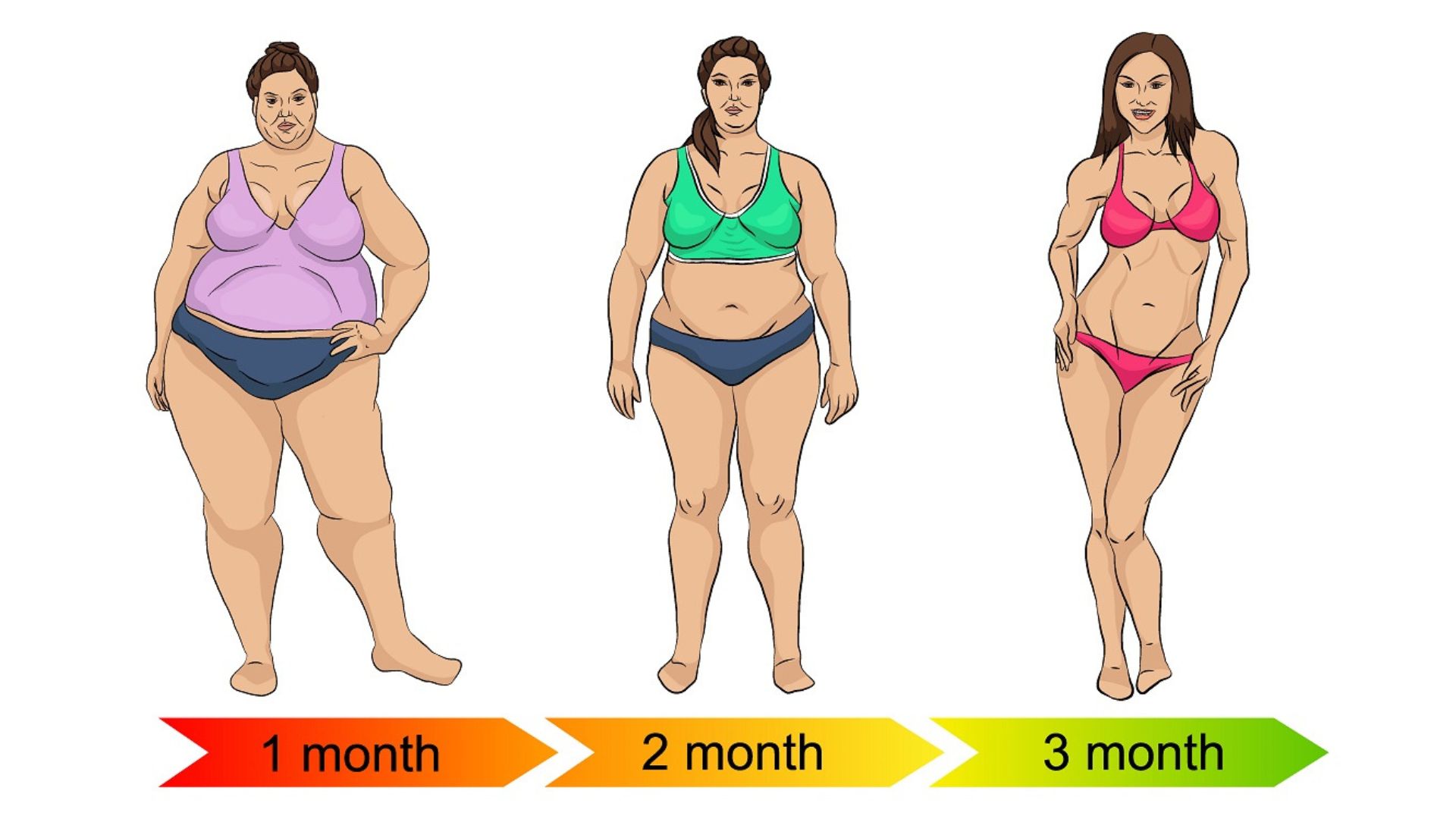Home>Finance>How To Qualify For A Breast Reduction Through Insurance


Finance
How To Qualify For A Breast Reduction Through Insurance
Published: November 22, 2023
Learn how to finance your breast reduction surgery by understanding the insurance qualification process. Discover the steps to take and get the coverage you deserve.
(Many of the links in this article redirect to a specific reviewed product. Your purchase of these products through affiliate links helps to generate commission for LiveWell, at no extra cost. Learn more)
Table of Contents
Introduction
For many individuals, breast reduction surgery is a life-changing procedure that can alleviate physical discomfort, improve self-confidence, and enhance overall well-being. However, the cost of this surgery can be a significant barrier for many people. Fortunately, some insurance companies provide coverage for breast reduction surgery, making it more accessible to those who qualify.
In this article, we will explore the process of qualifying for a breast reduction through insurance. We will discuss the criteria used by insurance providers to determine eligibility, the documentation required to support your claim, and the steps to submit your insurance claim. We will also provide insights into appealing a denial of coverage and alternative financing options for those who do not meet insurance criteria.
It’s important to note that every insurance policy is different, and coverage for breast reduction surgery can vary. Some insurance plans may cover the entire procedure, while others may cover only a portion or exclude it entirely. Therefore, it’s crucial to review your insurance policy or consult with your insurance provider to understand your specific coverage.
Whether you have been suffering from back, neck, or shoulder pain, experiencing emotional distress due to the size of your breasts, or have other medical reasons that warrant a breast reduction, understanding the process of qualifying for insurance coverage is essential. By following the steps outlined in this article, you can increase your chances of receiving coverage for this transformative surgery.
Understanding Breast Reduction Surgery
Breast reduction surgery, also known as reduction mammoplasty, is a surgical procedure that aims to decrease the size of the breasts by removing excess fat, glandular tissue, and skin. This procedure not only reduces the physical burden of heavy breasts but also addresses the related symptoms, such as chronic pain, discomfort, and posture issues.
The surgery involves careful planning and consideration of several factors, including the desired breast size, proportionality, and overall aesthetic outcome. It is typically performed under general anesthesia by a qualified plastic surgeon.
During the procedure, the surgeon will make incisions on the breasts to access the underlying tissue. The excess breast tissue, fat, and skin are then removed, and the remaining breast tissue is reshaped and repositioned to achieve the desired appearance. The nipples are often repositioned as well to ensure they are proportional to the new breast size. The incisions are then closed with sutures, and dressings or surgical bras are applied to aid in healing.
Recovery time varies from individual to individual, but most patients can expect some discomfort, swelling, and bruising in the first few weeks following surgery. It is important to follow post-operative instructions provided by the surgeon to ensure proper healing and minimize complications.
In addition to the physical benefits, breast reduction surgery can have a positive impact on a person’s mental and emotional well-being. It can help alleviate self-consciousness, improve body image, and boost self-confidence. Many individuals find that their overall quality of life improves as they are able to engage in physical activities more comfortably and wear clothing styles that were previously inaccessible due to their breast size.
It is important to consult with a board-certified plastic surgeon to discuss your specific goals and expectations for the surgery. The surgeon will evaluate your medical history, perform a physical examination, and discuss the potential risks and benefits associated with breast reduction surgery.
Determining Eligibility for Insurance Coverage
Insurance coverage for breast reduction surgery is typically based on medical necessity rather than purely cosmetic reasons. Each insurance provider has its own set of criteria that must be met to qualify for coverage. Understanding these criteria is essential before pursuing insurance coverage for your breast reduction procedure.
The most common factors that insurance companies consider when determining eligibility for coverage include:
- Physical Symptoms: Insurance providers often require documented evidence of physical symptoms related to large breasts, such as chronic back, neck, or shoulder pain, difficulty in finding properly fitting bras, recurring rashes or skin irritation, or postural issues. Medical records, diagnostic tests, and previous treatments or therapies may need to be provided to establish the severity and impact of these symptoms.
- Body Mass Index (BMI): Some insurance companies have BMI requirements for coverage, as they consider it a measure of overall health. BMI is calculated using height and weight, and each insurer may have its own threshold for coverage.
- Non-Surgical Treatments: Insurance providers may require patients to demonstrate that non-surgical treatments for reducing breast size, such as physical therapy, chiropractic care, or weight loss interventions, have been attempted but were unsuccessful in alleviating symptoms.
- Psychological Distress: In some cases, insurance companies may require psychological evaluation or reports from a mental health professional to demonstrate the emotional distress and negative impact on quality of life resulting from large breasts.
It’s important to consult with your insurance provider or review your insurance policy to understand the specific eligibility criteria for breast reduction surgery. This will help you determine if you meet the requirements and what supporting documents you need to provide.
If your insurance provider does not cover breast reduction surgery or you do not meet the criteria for coverage, you may still have other options. Some employers offer voluntary supplemental insurance plans that cover cosmetic procedures, including breast reduction. Additionally, there are financing options available, such as healthcare loans or credit programs, that can help make the procedure more affordable.
Having a clear understanding of your insurance coverage eligibility is crucial before proceeding with a breast reduction. It is recommended to consult with your primary care physician or a plastic surgeon who specializes in breast reduction to evaluate your specific circumstances and provide guidance on the insurance process.
Documenting Medical Necessity
When seeking insurance coverage for breast reduction surgery, it’s essential to provide thorough documentation that demonstrates the medical necessity of the procedure. This documentation plays a crucial role in convincing the insurance company that the surgery is not solely cosmetic but is required to alleviate significant physical symptoms and improve overall quality of life. Here are some key steps to effectively document medical necessity:
- Obtain Medical Records: Request copies of your medical records from healthcare providers who have treated you for symptoms related to large breasts. These records should include a detailed history of your symptoms, any non-surgical treatments attempted, and the impact of these symptoms on your daily life.
- Consultation with a Plastic Surgeon: Schedule a consultation with a board-certified plastic surgeon who specializes in breast reduction surgery. The surgeon will conduct a thorough examination, assess your symptoms, and provide a professional opinion regarding the medical necessity of the procedure. It is important to choose a surgeon who is experienced in dealing with insurance claims and can assist in providing the necessary documentation for your insurance claim.
- Photographic Evidence: Take clear and detailed photographs of your breasts from different angles. These photographs can provide visual evidence of the physical symptoms, including the size and proportion of the breasts, the presence of skin irritation or rashes, and any postural issues. Make sure the photographs are well-lit and properly labeled with your identifying information.
- Supporting Letters: Request letters of support from your primary care physician, physical therapists, chiropractors, or other healthcare professionals who have treated you for your symptoms. These letters should outline the severity and impact of your symptoms and emphasize the medical necessity of the breast reduction surgery.
- Prior Authorization: Work with your plastic surgeon and insurance provider to obtain pre-authorization for the procedure. This involves submitting all the required documentation to the insurance company for review and approval before scheduling the surgery. Prior authorization helps ensure that you have a clear understanding of your coverage and reduces the risk of unexpected expenses.
Remember, the goal is to provide comprehensive evidence that demonstrates the significant physical and psychological impact of your condition. The more compelling and detailed your documentation, the higher the chances of obtaining insurance coverage for your breast reduction surgery.
It is crucial to stay organized throughout the process, keeping copies of all documentation and maintaining clear communication with your plastic surgeon and insurance provider. Being proactive and persistent in gathering the necessary evidence will increase the likelihood of a successful insurance claim.
Gathering Essential Documentation
When it comes to seeking insurance coverage for breast reduction surgery, having the necessary documentation is crucial to support your claim. The insurance company will rely on this documentation to evaluate the medical necessity of the procedure. Here are the essential documents you should gather:
- Medical Records: Collect your medical records from healthcare providers who have treated you for symptoms related to your large breasts. This includes records of consultations, examinations, and any non-surgical treatments you have undergone, such as physical therapy or chiropractic care.
- Photographs: Take high-quality photographs of your breasts from different angles. These photographs serve as visual evidence and can help demonstrate the proportion and size of your breasts, any visible symptoms like rashes or skin irritation, and the overall impact on your physical well-being. Ensure the photographs are properly labeled with your identifying information.
- Letters of Support: Request letters of support from healthcare professionals who have treated you for your condition, such as your primary care physician, physical therapist, or chiropractor. These letters should outline the medical necessity of the surgery, describe the severity of your symptoms, and explain how your condition has impaired your daily activities and quality of life.
- Psychological Evaluation: If your emotional well-being has been significantly affected by your large breasts, consider obtaining a psychological evaluation or a letter from a mental health professional. This can provide further evidence of the psychological distress caused by your condition and support the medical necessity of the surgery.
- Insurance Forms: Familiarize yourself with the specific forms and paperwork required by your insurance company. These may include pre-authorization forms, claim forms, or any specific documentation requested by your insurer. Make sure to fill out these forms accurately and include all necessary information.
It’s important to keep copies of all the gathered documentation for your records. Make sure to maintain clear organization and have multiple copies of important documents to ensure they are readily accessible whenever needed.
Consulting with a board-certified plastic surgeon who has experience with insurance claims can also be helpful in gathering the necessary documentation. They can guide you through the process and advise on the specific requirements of your insurance company.
Remember that the more comprehensive and well-documented your case is, the more likely it is that your insurance claim will be successful. Taking the time to gather all the essential documentation will greatly increase your chances of obtaining the coverage you need for your breast reduction surgery.
Submitting the Insurance Claim
Once you have gathered all the necessary documentation to support your insurance claim for breast reduction surgery, it’s time to submit the claim to your insurance company. Properly completing and submitting the claim is crucial to ensure a smooth and efficient process. Here are steps to consider when submitting your insurance claim:
- Review Your Policy: Carefully review your insurance policy to understand the specific requirements and guidelines for submitting a claim for breast reduction surgery. Take note of any specific forms or documentation that is required.
- Complete the Claim Form: Obtain the necessary claim forms from your insurance company or download them from their website. Fill out the forms accurately, providing all the requested information. Ensure that you include your personal details, policy number, and any other relevant information required.
- Attach Supporting Documentation: Include all the supporting documentation you have gathered, such as medical records, photographs, letters of support, and any other relevant paperwork. Organize these documents in a clear and logical order that corresponds to the information provided on the claim form.
- Keep Copies: Make copies of all the documents you are submitting for your records. This will serve as a backup in case any documents are lost or misplaced during the claim process.
- Submit the Claim: Send the completed claim form and the supporting documentation to your insurance company through the designated channels. This may include mailing the documents or submitting them electronically through an online portal. Ensure that you follow the specific instructions provided by your insurance provider.
- Keep Track of Dates and Communication: Note the date you submitted the claim and keep a record of any communication you have with your insurance company regarding the claim. This includes any letters, emails, or phone conversations. This information will be important should you need to follow up on the status of your claim or for reference during the appeals process.
It’s important to note that the processing time for an insurance claim can vary. Some claims may be processed relatively quickly, while others may take longer. Be patient but proactive. If you have not received a response within a reasonable timeframe, don’t hesitate to follow up with your insurance company for updates.
Remember that each insurance company has its own procedures and requirements, so it’s vital to closely follow their guidelines for submitting the claim. By submitting a well-documented claim with all the necessary information, you increase the likelihood of a successful outcome.
Keep in mind that not all claims are approved immediately. In the event that your claim is denied, it is important to understand the appeal process, which we will discuss in the next section.
Appealing a Denial of Coverage
In some cases, insurance companies may deny coverage for breast reduction surgery. However, receiving a denial does not necessarily mean the end of the road. You have the option to appeal the decision and provide additional information or clarification to support your case. Here are the steps to consider when appealing a denial of coverage:
- Understand the Denial Reason: Carefully review the denial letter from your insurance company to understand the specific reason for the denial. Common reasons for denial may include lack of medical necessity documentation or failure to meet the insurance policy’s criteria.
- Consult Your Plastic Surgeon: Discuss the denial with your plastic surgeon, as they can help provide insights and guidance based on their experience with insurance claims. They may be able to review your case and offer additional documentation or support to strengthen your appeal.
- Gather Additional Evidence: If your denial was due to insufficient documentation, gather any additional evidence that supports the medical necessity of the breast reduction surgery. This may include obtaining further medical records, obtaining a second opinion from a specialist, or obtaining a more detailed letter of support from your healthcare provider.
- Compose a Clear and Detailed Appeal Letter: Write a formal appeal letter to your insurance company, addressing the denial and providing a detailed explanation of the medical necessity of the surgery. Include any new documentation or evidence that supports your case. Articulate how the denial has negatively impacted your quality of life and provide persuasive arguments to support your appeal.
- Follow the Insurance Company’s Appeal Procedure: Review your insurance policy or contact your insurance provider to understand the specific appeals process. This may include submitting the appeal letter and supporting documentation through a designated channel, adhering to specific deadlines, and providing any additional forms or paperwork requested.
- Maintain Copies and Records: Keep copies of all documents related to your appeal, including the appeal letter, supporting documentation, and any communication with your insurance company. This will help you track the progress of your appeal and provide reference in case of further inquiries or appeals.
- Be Persistent and Follow Up: After submitting your appeal, be proactive in following up with your insurance company to inquire about the progress of your case. Keep a record of any conversations or communication regarding your appeal. Persistence and patience are key in navigating the appeals process.
Remember that the appeals process can take time, and there is no guarantee of approval even after appealing. However, by providing comprehensive and compelling documentation that demonstrates the medical necessity of your breast reduction surgery, you increase the chances of a successful appeal.
If your appeal is still denied, you may have further options, such as seeking legal advice or exploring alternative financing options, which we will discuss in the next section.
Seeking Alternative Financing Options
If you do not qualify for insurance coverage for your breast reduction surgery or if your appeal has been denied, there are alternative financing options available to help make the procedure more affordable. While these options require careful consideration, they can provide you with the opportunity to undergo the surgery you desire. Here are a few alternatives to explore:
- Healthcare Loans: Many financial institutions offer specialized healthcare loans specifically designed to cover medical expenses, including cosmetic procedures. These loans often have flexible repayment terms and competitive interest rates. Research and compare different loan options to find one that suits your needs and financial situation.
- Credit Programs: Some medical providers offer credit programs or in-house financing options for patients seeking cosmetic surgeries. These programs may provide low or no-interest repayment plans over an extended period. It’s important to carefully review the terms and conditions associated with these programs and ensure that they align with your financial capabilities.
- Crowdfunding: Crowdfunding platforms can be a viable option for individuals seeking financial assistance for their breast reduction surgery. These platforms allow you to create a campaign and share your story with friends, family, and even strangers who may be willing to contribute towards your surgical expenses.
- Savings and Budgeting: If possible, saving up for the procedure over time can help mitigate the financial burden. Assess your current expenses and consider creating a budget to allocate funds toward your breast reduction surgery goal. This may require making certain sacrifices or adjustments in your spending habits.
- Employer Benefit Programs: Check with your employer to see if they offer any voluntary supplemental insurance plans that cover cosmetic procedures. These plans may require additional premiums but can provide coverage for your breast reduction surgery.
Before committing to any financing option, carefully evaluate the terms, interest rates, and repayment plans. Consider consulting with a financial advisor or discussing the available options with your plastic surgeon, who may have recommendations or partnerships with healthcare financing companies.
It’s essential to fully understand the financial commitment and ensure that you can comfortably manage the repayment plan without causing significant strain on your finances. Remember to prioritize your overall financial health and make decisions that align with your long-term financial goals.
While seeking alternative financing options may require additional planning and research, these options can help make your breast reduction surgery more accessible and achievable.
Conclusion
Breast reduction surgery can have a profound impact on your physical and emotional well-being. While insurance coverage for this procedure varies, understanding the process of qualifying for coverage is essential. By following the steps outlined in this article, you can increase your chances of receiving insurance coverage for your breast reduction surgery.
Start by understanding the criteria used by insurance providers to determine eligibility. Documenting the medical necessity of the procedure is vital, and gathering comprehensive and persuasive documentation is key to supporting your claim. Pay close attention to the specific requirements of your insurance company and ensure you provide all necessary supporting documents along with your claim.
In the event of a denial, do not lose hope. You have the option to appeal the decision by providing additional evidence and clarifications. Consult with your plastic surgeon and gather any necessary documentation or support to strengthen your case. Be persistent and follow the appeals process outlined by your insurance provider.
If insurance coverage is not available to you, explore alternative financing options. Healthcare loans, credit programs, crowdfunding, and employer benefit programs are all viable options to help make your breast reduction surgery more affordable. Consider each option thoughtfully and evaluate the terms and conditions before making a decision.
Remember, your well-being is important, and finding a solution that works for you is worth the effort. Consult with a board-certified plastic surgeon who specializes in breast reduction and seek their guidance throughout the process.
By staying informed, advocating for yourself, and seeking out the best options available, you can take a step closer to achieving the breast reduction surgery you desire, improving your quality of life, and enhancing your self-confidence.














